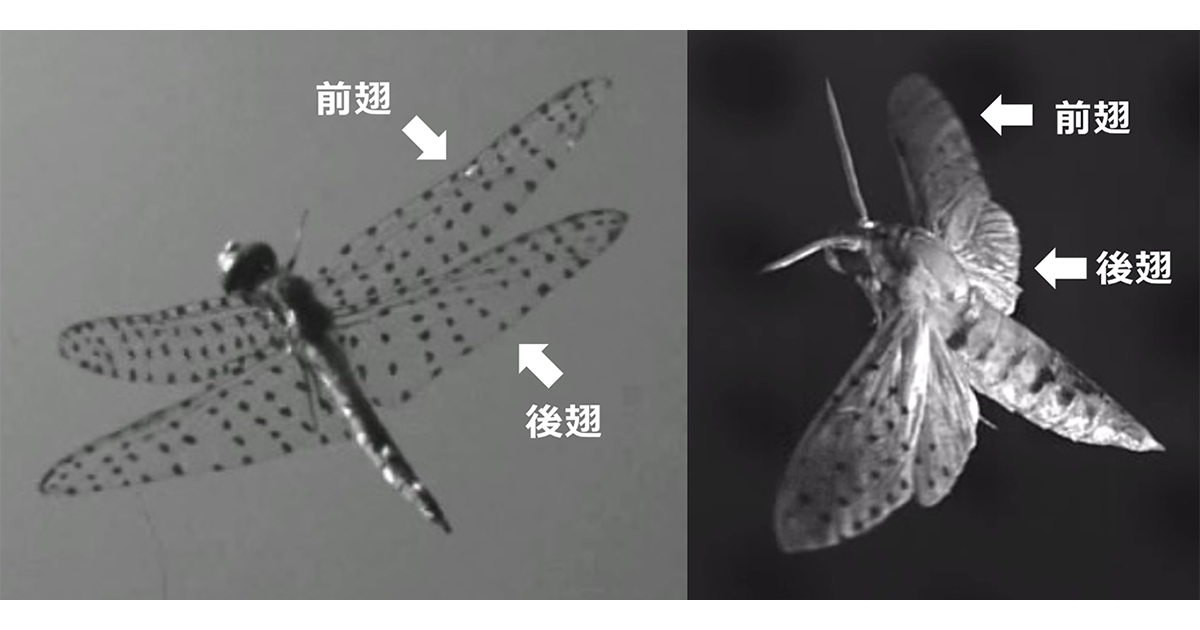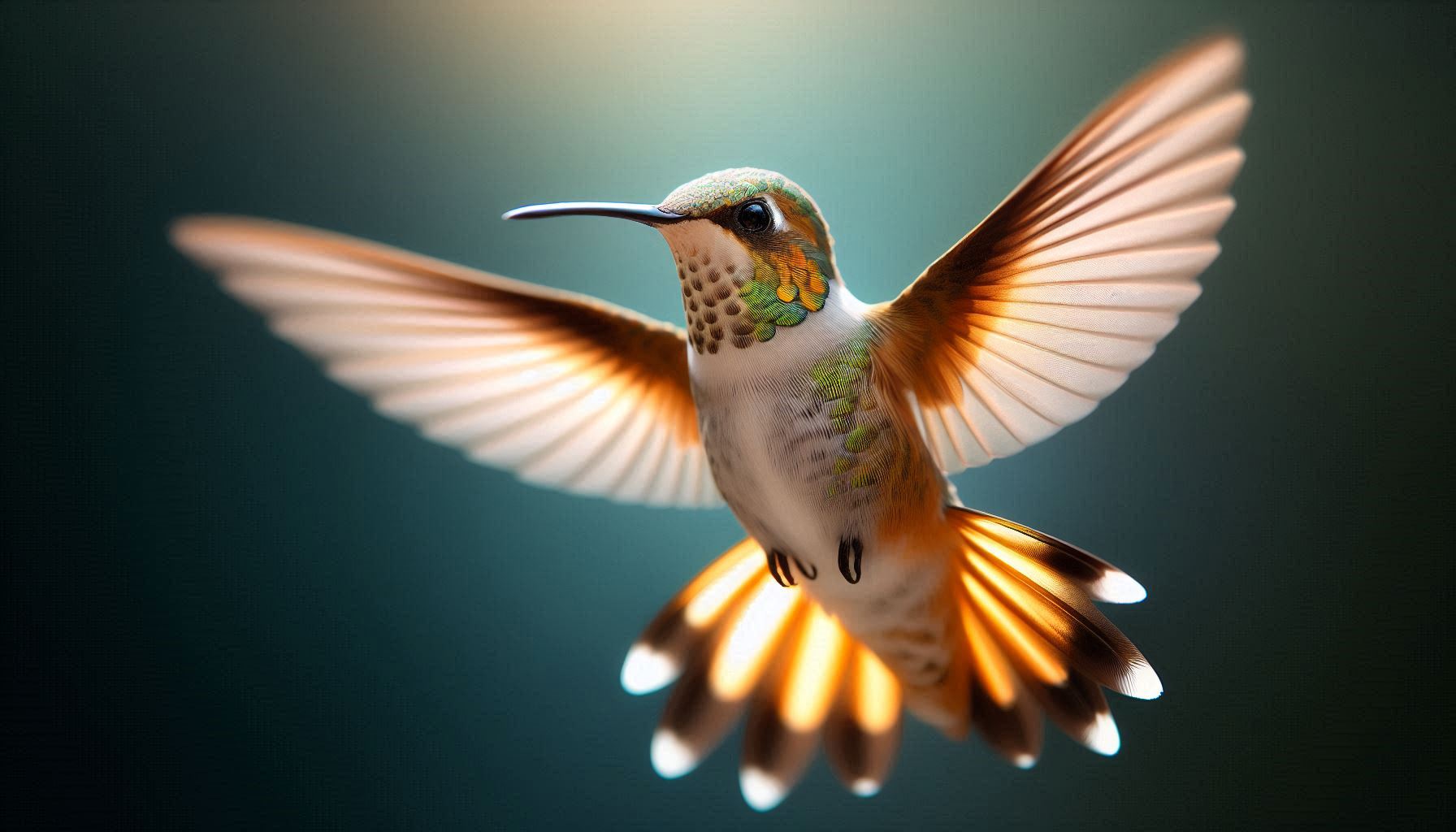While investigating vibrations, we came across the vibrations of flapping wings of insects and other insects. The high-speed flapping of wings not only allows insects to fly and move through the air, but also allows them to stop in mid-air, a process known as hovering. We often see insects hovering, but it seems that complex aerodynamic forces are at work in their movements to stop in mid-air. We get the impression that stopping in mid-air requires more difficult posture control than moving through the air.
High-speed flapping
Most creatures that hover seem to be insects, but the only creatures other than insects that can hover are hummingbirds. To hover, they need to flap their wings at high speed; a hummingbird weighs just a few grams and flap its wings about 80 times per second, a honeybee about 250 times, and a mosquito about 1,000 times. The smaller the body, the lighter it is, but the more times it flaps its wings. It’s amazing that they can continue to resist gravity.
indirect flight muscles
The buzzing sound you hear when approaching is likely due to this rapid wing flapping, and insects appear to have special muscles called indirect flight muscles. There are dorsal longitudinal muscles running from the head to the abdomen, and dorsoventral muscles running from the back to the legs, which contract alternately to vibrate and flap their wings multiple times with a single nerve impulse. Normally, this is synchronized with the inflow and outflow of calcium in the cells, but indirect flight muscles seem to be able to move asynchronously, and while the normal limit is around 100 times, in theory they can move at high speeds with no upper limit.

The Bumblebee Paradox
There is something called the bumblebee paradox, which says, “Even though bumblebees have been seen flying, they should not be able to fly with the size, shape, and movement of their wings.” Current research suggests that bumblebees fly by moving their wings like flapping flags, creating a vortex of air called a leading edge vortex on the leading edge of the wings, and the negative pressure of the vortex sucks the wings up, allowing them to fly. It seems that most small insects fly by the force of this vortex.
Mosquito hovering
Among the insects that fly using the power of vortices, the way mosquitoes fly seems to be particularly unique. The angle of the stroke, which is the reciprocating movement of the wings of a mosquito, is very small, at about 40 degrees, less than half the 90 degrees of the smallest insect other than mosquitoes, the honeybee. By increasing the number of times they flap their wings because of the short stroke, the airflow from the previous flap remains, and they recycle the airflow to generate a trailing edge vortex.
And after generating a leading edge vortex like other insects, they rotate their wings in a twisting motion to generate a force called rotational drag, and it appears that mosquitoes are the only insects that use trailing edge vortices and rotational drag. Mosquitoes have complete control over aerodynamics.
Dragonfly Hovering
Dragonflies are said to have the most stable hovering motion among all insects, and sometimes they appear to be really still. Dragonflies are capable of advanced flight control, and while other insects flap their front and back wings as a pair, they control each of their four wings independently. Dragonflies hover extremely stably because the air currents created by their front wings generate an upward force for the back wings, and the front and back wings move alternately at different times to cancel out each other’s reaction forces.

Hovering, awesome!
Staying still in one place in a fluid space seems to be more difficult than moving. Just as it is difficult to maintain the same position in a flowing ocean or river, staying still in the air seems to require more complex aerodynamics than gliding through the air. It is amazing that creatures are so familiar with how to deal with the fluid that is air. The phenomenon of hovering is amazing. The possibilities of Earth’s fluids are amazing.


